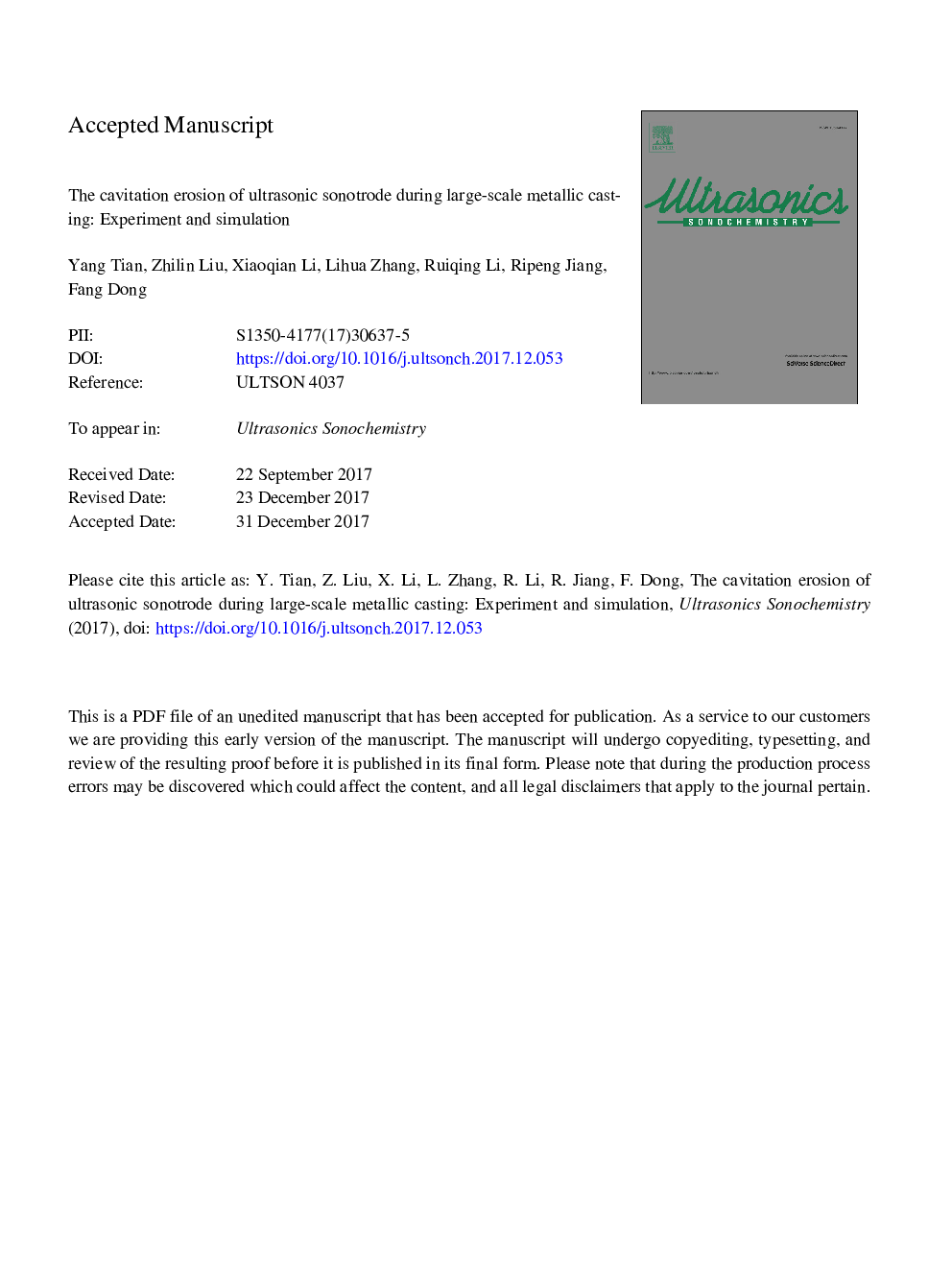| Article ID | Journal | Published Year | Pages | File Type |
|---|---|---|---|---|
| 7702904 | Ultrasonics Sonochemistry | 2018 | 26 Pages |
Abstract
Ultrasonic sonotrodes play an essential role in transmitting power ultrasound into the large-scale metallic casting. However, cavitation erosion considerably impairs the in-service performance of ultrasonic sonotrodes, leading to marginal microstructural refinement. In this work, the cavitation erosion behaviour of ultrasonic sonotrodes in large-scale castings was explored using the industry-level experiments of Al alloy cylindrical ingots (i.e. 630â¯mm in diameter and 6000â¯mm in length). When introducing power ultrasound, severe cavitation erosion was found to reproducibly occur at some specific positions on ultrasonic sonotrodes. However, there is no cavitation erosion present on the ultrasonic sonotrodes that were not driven by electric generator. Vibratory examination showed cavitation erosion depended on the vibration state of ultrasonic sonotrodes. Moreover, a finite element (FE) model was developed to simulate the evolution and distribution of acoustic pressure in 3-D solidification volume. FE simulation results confirmed that significant dynamic interaction between sonotrodes and melts only happened at some specific positions corresponding to severe cavitation erosion. This work will allow for developing more advanced ultrasonic sonotrodes with better cavitation erosion-resistance, in particular for large-scale castings, from the perspectives of ultrasonic physics and mechanical design.
Related Topics
Physical Sciences and Engineering
Chemistry
Chemistry (General)
Authors
Yang Tian, Zhilin Liu, Xiaoqian Li, Lihua Zhang, Ruiqing Li, Ripeng Jiang, Fang Dong,
